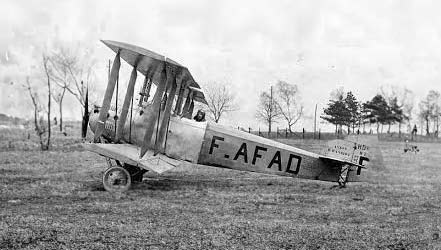French-built Hanriot HD.19, a 1920s floatplane trainer with single-engine, biplane structure for naval pilot instruction. The article delves into the Hanriot HD.19, its historical context, design philosophy, performance parameters, and operational service. It examines the needs of the French Navy during the 1920s, the technical attributes of the HD.19, its effectiveness compared to contemporaries, and its role in military training.
The post-World War I era was an age of transition for military aviation, with significant developments in aircraft technology and design. Floatplanes became crucial for naval operations, offering the ability to take off and land on water. In this environment, the Hanriot HD.19 was conceived to meet the French Navy’s need for a dedicated training aircraft for its pilots.
History of the development of the Hanriot HD.19
The Hanriot HD.19 was developed by the Hanriot company, a French aircraft manufacturer with a reputation established during World War I. After the war, there was an identified need for specialized training aircraft to prepare naval aviators for operating seaplanes and shipborne aircraft. The French Navy required an aircraft that was both reliable and forgiving for novice pilots to hone their skills.
The Hanriot company, under the leadership of René Hanriot, began the development of the HD.19 in the early 1920s. This period saw a shift from the primarily militaristic use of aircraft to include pilot training and civilian applications. The HD.19 program sought to create an aircraft that was not only easy to fly but also robust enough to withstand the rigors of training exercises.
Design of the Hanriot HD.19
The HD.19 was a conventional biplane with a fabric-covered airframe and wooden construction. It featured a pair of main floats for water operations, and a small tail float. The wingspan was approximately 34 feet (10.36 meters), and the aircraft had an overall length of 28 feet (8.53 meters), with the upper wing slightly larger than the lower to improve stability and control.
Powered by a single Le Rhône 9C rotary engine, the HD.19 had a modest power output of 80 horsepower. This engine was chosen for its simplicity and reliability, as well as being relatively easy to maintain – a key consideration for a training aircraft.
The HD.19 brought several advantages as a trainer. Its floatplane design meant that pilots could train for naval aviation roles directly on the water. Moreover, the biplane configuration was stable and forgiving, an essential quality for an aircraft used to train novice pilots. However, as aviation technology advanced rapidly during the 1920s, the HD.19’s traditional design and modest performance were quickly overshadowed by more modern aircraft.

Performance of the Hanriot HD.19
In terms of performance, the Hanriot HD.19 was not designed to break records. It had a top speed of around 75 mph (121 km/h) and could reach a maximum altitude of about 10,000 feet (3,048 meters). The range was limited, suitable for short training sorties rather than extended operations.
When compared with other training aircraft of the time, such as the Avro 504, the HD.19 was less powerful and slower. However, its performance was considered adequate for the training role, where handling characteristics and safety were more important than speed or agility.
Military use and combat of the Hanriot HD.19
The HD.19 was equipped with basic instrumentation and controls, with no armament as it was designed purely for training purposes. It was employed extensively by the French Navy throughout the 1920s as a trainer for naval aviators, playing a crucial role in preparing pilots for operation from ships and coastal bases.
The aircraft did not see combat, nor was it intended to. It was a dedicated trainer, and as such, its competition was other training aircraft rather than combat planes. The HD.19 was not exported to other countries, as it was specifically tailored to the needs of the French Navy.
The Hanriot HD.19 remained in service as a trainer throughout its operational life. As technology advanced, it was eventually replaced by more modern and capable aircraft, reflecting the continuous evolution of military aviation training.
The Hanriot HD.19 was an integral part of French naval aviation in the interwar period, fulfilling its role as a training aircraft with reliability and efficiency. It exemplified the era’s biplane trainers’ characteristics – stability, ease of control, and robustness. Though surpassed by technological advancements, the HD.19 represents an important chapter in the history of military aviation training.
Back to the Warbirds section.